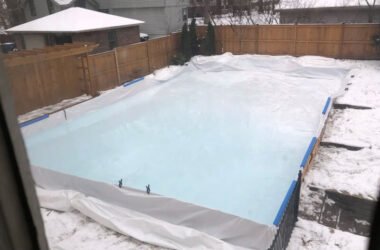This is especially true for older homes and those located in colder or more humid climates, where excess moisture, poor ventilation, and aging materials can make problems worse. In these environments, subtle signs, like a persistent musty smell or occasional flickering light, can signal much bigger issues beneath the surface.
Whether you’ve owned your home forever or recently purchased a charming fixer-upper, being proactive about home safety will safeguard your family’s health and help preserve the value and longevity of your home.
Let’s explore the most common hidden hazards in residential spaces and some practical steps you can take to prevent them.
Combatting Mold and Mildew Before They Spread
Mold and mildew thrive in moisture-rich environments, making basements, bathrooms, laundry rooms, and attics prime targets. Left unchecked, these types of fungi can spread rapidly and trigger health issues ranging from allergic reactions to serious respiratory problems, especially in children, the elderly, or those with compromised immune systems.
To keep mold and mildew at bay, install dehumidifiers in damp spaces and try to keep humidity levels under 50%. Use exhaust fans in bathrooms and kitchens, and open windows when weather permits to ensure your home is properly ventilated.
You should also seal water leaks quickly. Even a small drip under the sink or around a window can promote fungal growth. Inspect hidden areas, too, such as behind drywall, under cabinets, and around insulation where moisture can silently collect.
Air quality is another often-overlooked aspect of mold prevention. A lot of indoor air pollution can be invisible to the eye, like the pollutants produced by mold, dust, pet dander, household cleaners, and worse, carbon monoxide, and must be detected using other methods.
Routine cleaning and heating, ventilation, and air conditioning (HVAC) maintenance, along with using high-efficiency particulate air (HEPA) filters, can make your indoor air quality much better and minimize health risks.
Toxins in Your Water and Air: What To Test and Why
Beyond mold, your home’s air and water can also harbor chemical contaminants that are tasteless, odorless, and invisible, yet potentially harmful to long-term health. Among the most concerning are:
- Per- and polyfluoroalkyl substances (PFAS): PFAS, also known as “forever chemicals,” are a group of long-lasting, man-made chemicals commonly found in tap water that may pose health risks like obesity, liver damage, and cancer. PFAS are particularly troubling because they build up in the body over time.
- Radon: A naturally occurring radioactive gas, radon seeps into homes through the ground and is the second leading cause of lung cancer in the U.S.
- Volatile organic compounds (VOCs): Emitted by paints, cleaners, and building materials, VOCs can cause headaches, dizziness, and respiratory problems.
Here’s what you can do to prevent or get rid of each of these:
- Conduct PFAS water testing using an at-home DIY test kit. Although they’re less comprehensive, they’re easy to do and give you results almost immediately. A better option is professional testing, where they handle all the laboratory work, checking for lead, PFAS, and other common toxins, and result analysis.
- Monitor indoor air qualitywith affordable smart monitors that detect VOCs, radon, and carbon dioxide levels.
- Invest in purification solutions, like activated carbon filters for removing chemicals and odors, HEPA filtration systems for allergen and particulate control, and professional remediation for confirmed high levels of dangerous substances.
Regularly checking your home’s water and air ensures that you can act quickly if you get unfavorable results while also enjoying peace of mind knowing your family’s environment is safe.
Watch Out for These Silent Structural Hazards
Beyond what you can breathe or drink, your home’s structure itself may hide some serious threats, especially if it was built before 1980. Watch out for these silent structural hazards:
Lead Paint and Asbestos
Homes built before modern safety codes may still contain lead-based paint or asbestos insulation, both of which are highly toxic. Lead exposure is particularly harmful to children and can result in developmental issues and behavioral problems. Asbestos, when disturbed, releases fibers that can cause lung disease and cancer.
If you suspect the presence of lead paint and asbestos, don’t attempt to remove them yourself. Hire a licensed abatement professional who can test and safely eliminate them.
Moisture Damage and Rotten Wood
Water and excess moisture can compromise your home’s structure the longer they’re present. Wet wall cavities, spongy floorboards, and mold behind siding often indicate hidden leaks or poor insulation. They can lead to wood rot and even foundation damage if you don’t address them.
Inspect basements and crawlspaces regularly, and if you feel soft spots underfoot or see sagging ceilings, bring in a contractor to assess the damage.
Outdated Electrical Systems
Many older homes still rely on aluminum wiring or unprotected breaker boxes, which present a serious fire hazard. Frayed wires, overloaded circuits, and inconsistent voltage should be addressed immediately by a licensed electrician.
Regular inspections, especially after purchasing a home or experiencing electrical issues, can prevent fire risks and costly emergency repairs.
Roofing and Weatherproofing
A weak or damaged roof can cause water intrusion, insulation failure, and mold. If you live in a climate with heavy snow or rainfall, make weatherproofing your roof a top priority. This can be done by choosing durable roofing materials like asphalt shingles. You can also install high-quality underlayment to protect against moisture intrusion and gutter guards to ensure your drainage system is up to par.
Make Prevention Your Priority
Simply put, you should be enjoying the comfort of your home, not being concerned about it every waking moment. Identify and address hidden health and safety risks, whether in the air, water, or behind your walls, to protect your investment and your family’s well-being.
Schedule regular home assessments to stay on top of everything. Upgrade systems and materials when possible. And don’t ignore subtle signs, like unusual smells, flickering lights, or persistent dampness.
Even small steps, taken consistently, can prevent major headaches and financial burdens down the road. So stay curious, stay cautious, and treat your home as a living system that requires care and attention.








